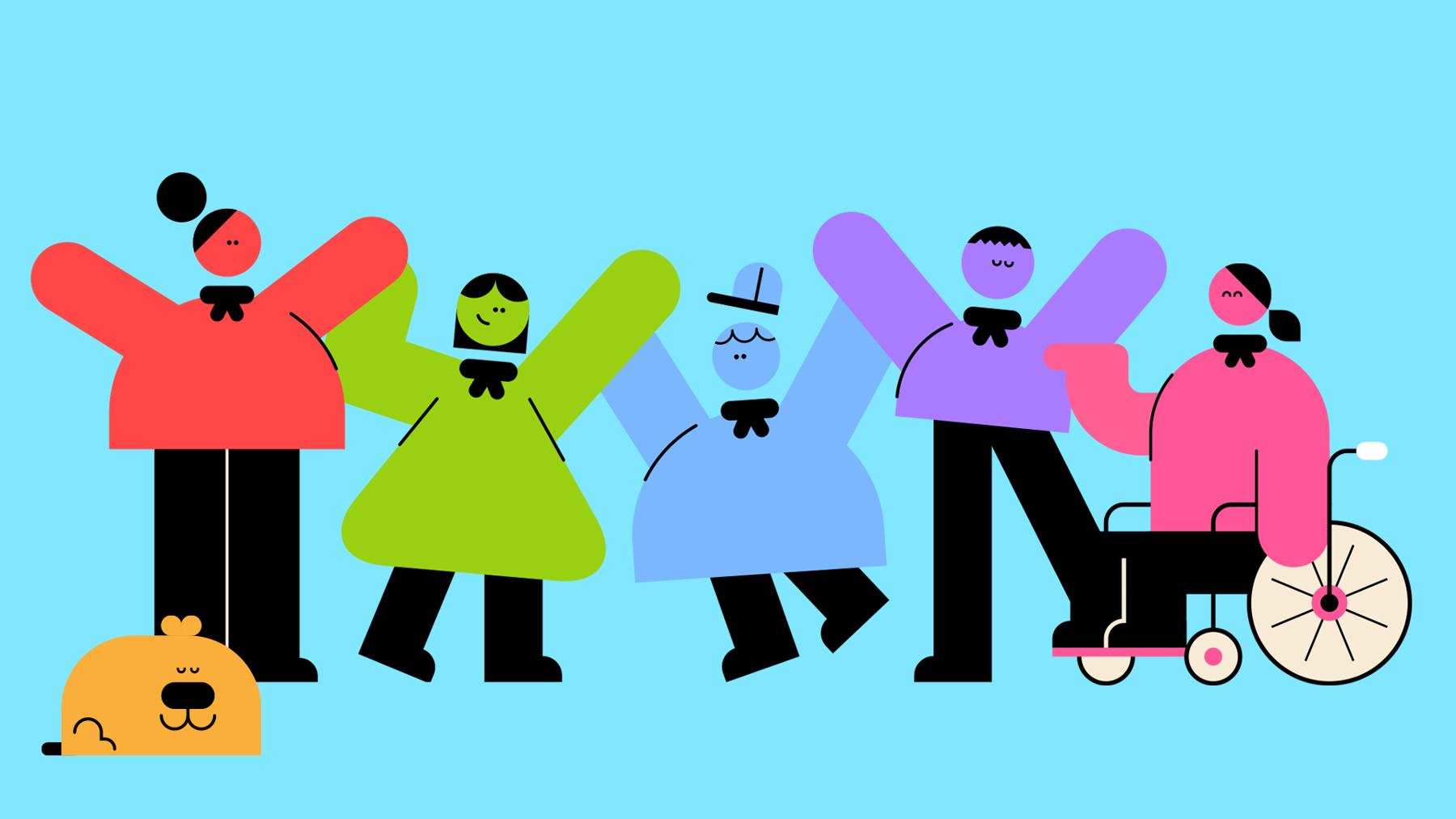Our group, our culture
You’ll need
- Pens or pencils
- Scrap paper

Culture counts
- Everyone should gather together. The person leading the activity should help people think about how their group is like a team. What sorts of things create a culture and sense of belonging?
- Everyone should get into a semi-circle. They should turn around so they face the rest of the meeting place and their backs face the semi-circle.
- The person leading the activity should explain that this is a safe space where everyone is listened to. Everyone should keep looking outwards, not at other people – they should focus on their own thoughts and answers.
- The person leading the activity should ask a question, for example ‘Did you feel nervous when you first joined this group?’. Anyone who agrees should put their hand in the air.
- The person leading the activity should keep asking questions. Everyone should raise their hands when they agree.
- The person leading the activity should give everyone a pen or pencil and three pieces of paper – each piece should be a different colour.
- Everyone should take their first piece of paper and write or draw something that they think is a unique feature of their group. For example, they may have a special saying or action song, a tradition, or a special way to mark occasions.
- Everyone should take their second piece of paper and write or draw a piece of advice they’d give to someone new. For example, they could say ‘don’t be afraid to ask questions’, ‘try to relax and have fun’, or ‘it’s OK to be yourself’.
- The person leading the activity should explain that a mission statement is a short, snappy statement that describes a group’s aim and values. For example, Manchester United’s mission statement is ‘to be the best football club in the world, on and off the field’.
- Everyone should take their last piece of paper and write or draw a potential mission statement for their group. For example, ‘our group asks the big questions together as friends’, ‘our group has fun as we get stuck in to challenges’, or ‘our group mucks in to learn skills for life’.
Game on
- Everyone should scrunch their pieces of paper up to make three separate balls.
- Everyone should split into four teams.
- Each team should go to a different corner of the meeting place. The person leading the activity should explain where the boundaries between the teams’ areas are.
- Everyone should launch their pieces of paper into another team’s area. They can throw like a goalkeeper or kick like a striker – whatever feels best.
- Everyone should keep sending pieces of paper out of their area into the other teams’ areas. They should stick at it, noticing each new ball of paper they need to remove.
- After two minutes, the person leading the activity should tell everyone to stop.
- Each team should take it in turns to read out the ideas on the pieces of paper in their area. After they’ve read all the ideas, they should put the pieces of paper in the middle of the meeting place so everyone can see them.
Get creative
- The person leading the activity should give each team some paper and some pens or pencils.
- Everyone should use the ideas in the middle of the space to create a ‘welcome’ that helps new people understand their group’s culture. It’s up to them what they create – they could design a game or activity, compose a song, write a booklet, or develop an interactive tour.
- Once each team has finished a draft of their idea, they should share it with everyone. People could give helpful feedback to help teams develop their ideas.
- In the future, the group should use people’s ideas to introduce new people to their group culture and help them feel welcome.
- Did you know what to expect when you first joined this group?
- Were you worried about making new friends when you first joined this group?
- Did anyone help you feel welcome when you first joined this group?
- Do you try and make people feel welcome when they first join this group?
Reflection
This activity helped everyone to build friendships. Do people think that sharing feelings and being honest helps to make stronger, more meaningful friendships? Was it easy to share feelings and be honest? Some people may have felt nervous, but others may have found it empowering. How did everyone create a safe space for people to share their feelings? Did thinking about their group culture help people feel connected to others in their community?
This activity was also about respecting others. How did people’s new welcomes show that they valued new members? Why might it be helpful to have ways of welcoming people to a group? People might think about how welcomes can help people who might be feeling nervous, and how it helps everyone come together and share a culture, regardless of their background.
Safety
All activities must be safely managed. You must complete a thorough risk assessment and take appropriate steps to reduce risk. Use the safety checklist to help you plan and risk assess your activity. Always get approval for the activity, and have suitable supervision and an InTouch process.
- Active games
The game area should be free of hazards. Explain the rules of the game clearly and have a clear way to communicate that the game must stop when needed. Take a look at our guidance on running active games safely.
You could introduce ‘yes and’ to help people develop a welcome that includes everyone’s ideas. People could take it in turns to build their welcome starting with a small idea and adding more detail by saying ‘yes and’. For example, the first person might say ‘Could we make a welcoming game?’ and the second could say ‘Yes, and the welcoming game could involve a ball’. The third person could add ‘Yes, and the ball could be passed around a circle’ and the fourth could add ‘Yes, and the ball could be passed by throwing it’.
It’s OK if people find writing tricky. They could draw pictures, or ask someone to write for them. People could also use computers, laptops, or tablets (as long as they don’t throw them around the room!).
All Scout activities should be inclusive and accessible.
You could arrange to meet up with other groups so everyone can share their experiences. This works really well with different ages (for example, Beavers, Cubs, and Scouts). People could chat about what they expected it to be like as well as what being part of the group’s actually like. People could even use their welcoming activities to welcome people who’ll be moving up soon.
This activity gave everyone the chance to share and be honest. This only works if people can be trusted to respect each other’s feelings and views!

